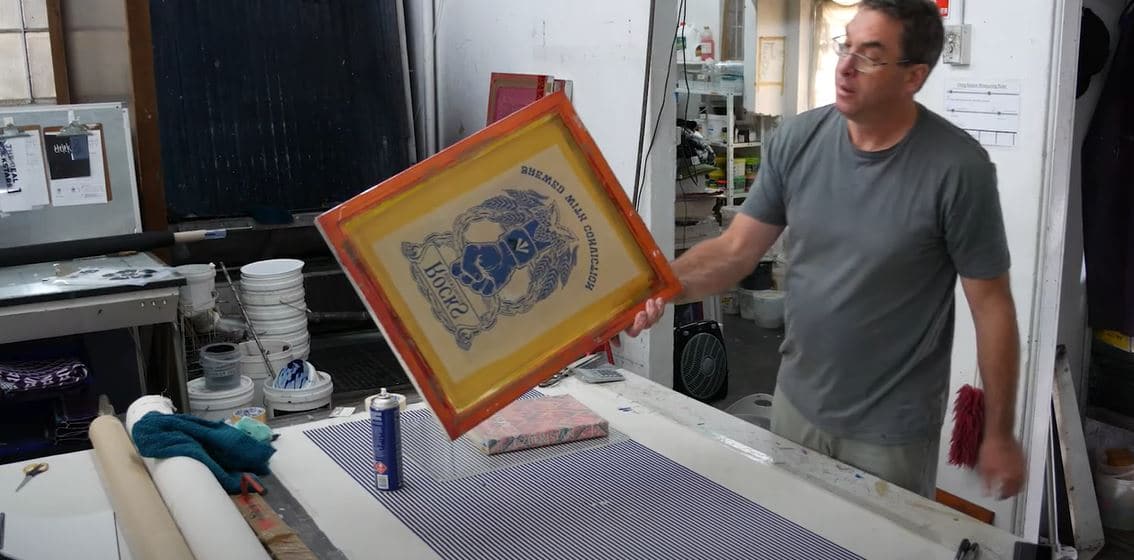ChatGPT said: What customers are saying in 10:9 Design reviews: real experiences
Wiki Article
The Essential Overview to Understanding Screen Printing and Its Versatile Makes use of
Screen printing has an abundant background that goes back to ancient times, advancing right into an advanced strategy utilized across numerous markets today. This guide explores the ins and outs of the screen printing process, describing its applications in home, marketing, and style design - 10:9 Design Embroidery. Recognizing these basics can open up imaginative possibility for both business and artistic projects. The complying with sections will reveal crucial ideas and techniques to boost one's screen printing undertakingsThe History of Screen Printing
Although screen printing has roots that trace back centuries, its evolution shows the creative and technical innovations of various cultures. Originating in ancient China, the method was originally utilized for enhancing textiles and later spread to Japan, where it ended up being integral to Ukiyo-e woodblock printing. The technique moved to Europe in the 18th century, where it obtained popularity among artisans and industrial printers. The innovation of image emulsion in the 20th century revolutionized screen printing, enabling for more elaborate styles and higher efficiency. Musicians like Andy Warhol further thrust its appeal, making use of the medium to create famous jobs that combined commercialism and great art. By the late 20th century, screen printing had established itself as a functional strategy, used in style, marketing, and fine art. Today, it proceeds to develop, integrating electronic modern technology and broadening its applications across different sectors.The Screen Printing Refine Explained
Screen printing transforms imaginative visions into tangible layouts with a collection of precise actions. Initially, a photo is developed and after that moved onto a screen, generally made from great mesh fabric extended over a frame. A light-sensitive solution is put on the screen, which is exposed to light, hardening in areas not covered by the photo. After rinsing the unhardened solution, a pattern is created.Next, the screen is put over the substratum, whether it be textile, paper, or another product. Ink is after that pushed through the open locations of the stencil using a squeegee, depositing the design onto the substratum listed below. This procedure can be duplicated for multiple shades, calling for different screens for each and every hue. The published thing is healed using warmth to assure the ink sticks correctly, resulting in a resilient, vibrant layout ready for use.
Kinds of Screen Printing Techniques

In addition, specialized strategies, such as discharge screen printing, get rid of dye from the textile to develop softer prints, while aluminum foil screen printing uses metallic foil to achieve a glossy surface (10:9 Design reviews). Each technique supplies unique features, catering to various innovative requirements and production scales, eventually broadening the possibilities within the screen printing domain name
Applications of Screen Printing in Numerous Industries

Additionally, the signs and advertising fields use screen printing for developing appealing display screens and banners. This method permits vibrant shades and elaborate styles that record interest. In electronic devices, screen printing is utilized for using conductive inks to circuit card, check this crucial for element links. The home decoration sector accepts screen printing to generate unique designs on fabrics visit our website and wall surface art. Generally, screen printing acts as a critical tool across varied areas, improving products with personalized and visually appealing graphics.
Tips for Successful Screen Printing Projects
While embarking on a screen printing project, cautious focus to information can considerably improve the final end result. Choosing high-quality materials is important; this includes the screen, inks, and substratums. Utilizing ideal mesh matters can impact ink deposition and detail resolution. Preparation is similarly essential; complete cleaning of screens and proper exposure times guarantee crisp prints.Next, exact enrollment is critical for multi-color prints. Using positioning devices can assist achieve specific layering. In addition, screening prints on scrap products before manufacturing assists identify possible issues without wasting sources.

Often Asked Concerns
What Materials Are Finest for Screen Printing on Material?
Cotton and polyester blends are optimal for screen printing on material because of their toughness and ink absorption. In addition, specialized materials like silk or canvas can create distinct structures and finishes, enhancing the overall layout top quality.Just how Do I Tidy and Maintain Screen Printing Devices?
To keep and clean up screen printing devices, one ought to frequently wash displays with ideal solvents, check squeegees for wear, lubricate relocating components, and store all items in a completely dry, dust-free atmosphere to lengthen their life expectancy.What Are the Environmental Effects of Screen Printing?
Screen printing can have substantial environmental influences, including chemical waste from solvents and inks, water usage throughout cleansing processes, and power consumption. Sustainable methods and eco-friendly products are vital for reducing these adverse impacts.Can Screen Printing Be Done at Home Properly?
Screen printing can be successfully done at home with the right products and techniques. Enthusiasts can create top quality prints, though success depends on their ability level, tools, and understanding of the process entailed.
What Are the Expenses Related To Starting a Display Printing Business?

Beginning a screen printing business involves expenses for tools, products, and workspace. Preliminary costs typically range from a few hundred to a number of thousand bucks, relying on the range, quality of machinery, and preferred production capability.
Screen printing has an abundant background that dates back to old times, evolving into an advanced method utilized throughout numerous sectors today. An additional strategy, rotating screen printing, uses round displays, facilitating continuous printing on fabric rolls, thus improving effectiveness for massive productions. Additionally, specialty techniques, such as discharge screen printing, remove dye from the fabric to develop softer prints, while aluminum foil screen printing uses metal aluminum foil to accomplish a shiny finish. In the fashion sector, screen printing is extensively made use of to develop lively styles on clothing, allowing brands to display their one-of-a-kind designs. Cotton and polyester blends are suitable for screen printing on material due to their sturdiness and ink absorption.
Report this wiki page